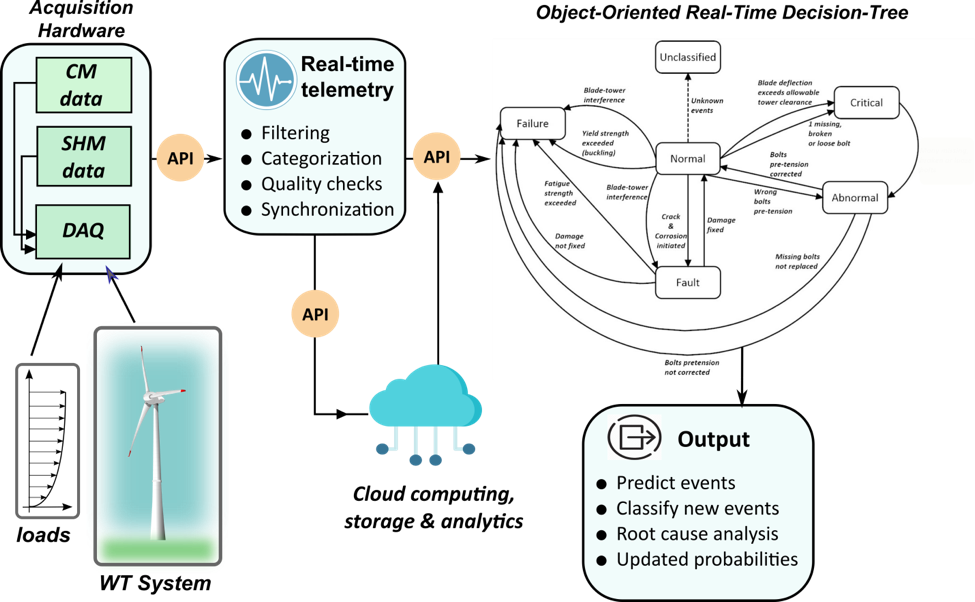Autonomous Decision Trees for Real-Time Monitoring and Diagnostics of Wind Turbines
Owners, operators and manufacturers of wind turbines (WTs) spend significant resources on discovering root causes of faults in components on WTs. The Chair of Structural Mechanics is developing a software-hardware solution for the smart monitoring of WTs, which is based on data fusion and self-training capabilities.
The envisioned framework implements an object-oriented, real-time, Decision-Tree learning algorithm and aims at performing diagnostics of structural and mechanical components, root cause analysis of failures and quantitative risk assessment in the context of operation and maintenance (O&M) scheduling of WTs. The key concept lies in running WT telemetry data through a decision tree algorithm in real-time for detecting faults, errors, damage patterns, anomalies and abnormal operation (i.e., “end states”).
A decision tree essentially comprises a machine learning tool for classification of event outcomes. It features a “flow-chart” like structure, laying a path from an initiating event to an “end state” of a system. For a given initiating event, multiple end states are possible, linking each event to an associated probability of occurrence. Once built and trained, and given a new set of real-time measurements, the decision tree may be used to predict “end states” and classify (discover) previously unknown “end states”. The use of decision trees is motivated by the ease of their implementation and interpretation as compared against alternative quantitative data-driven tools, in addition to being a natural fit for learning from big data on WT fleets.
The ESC member involved in this project is, Prof. Eleni Chatzi, Chair of Structural Mechanics.
